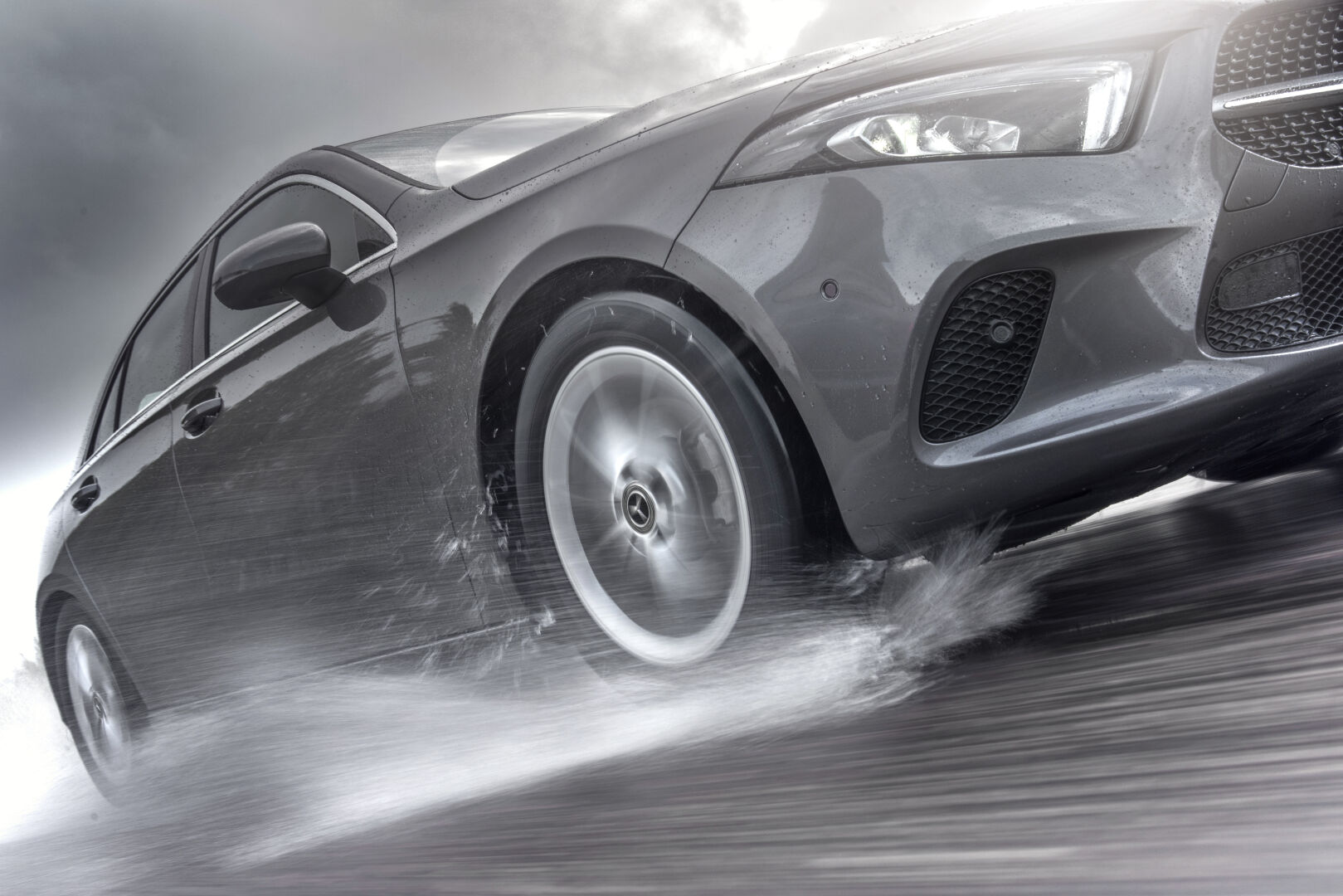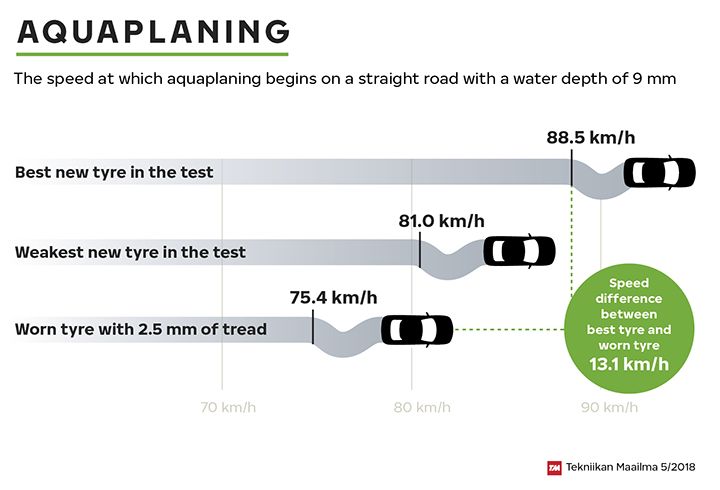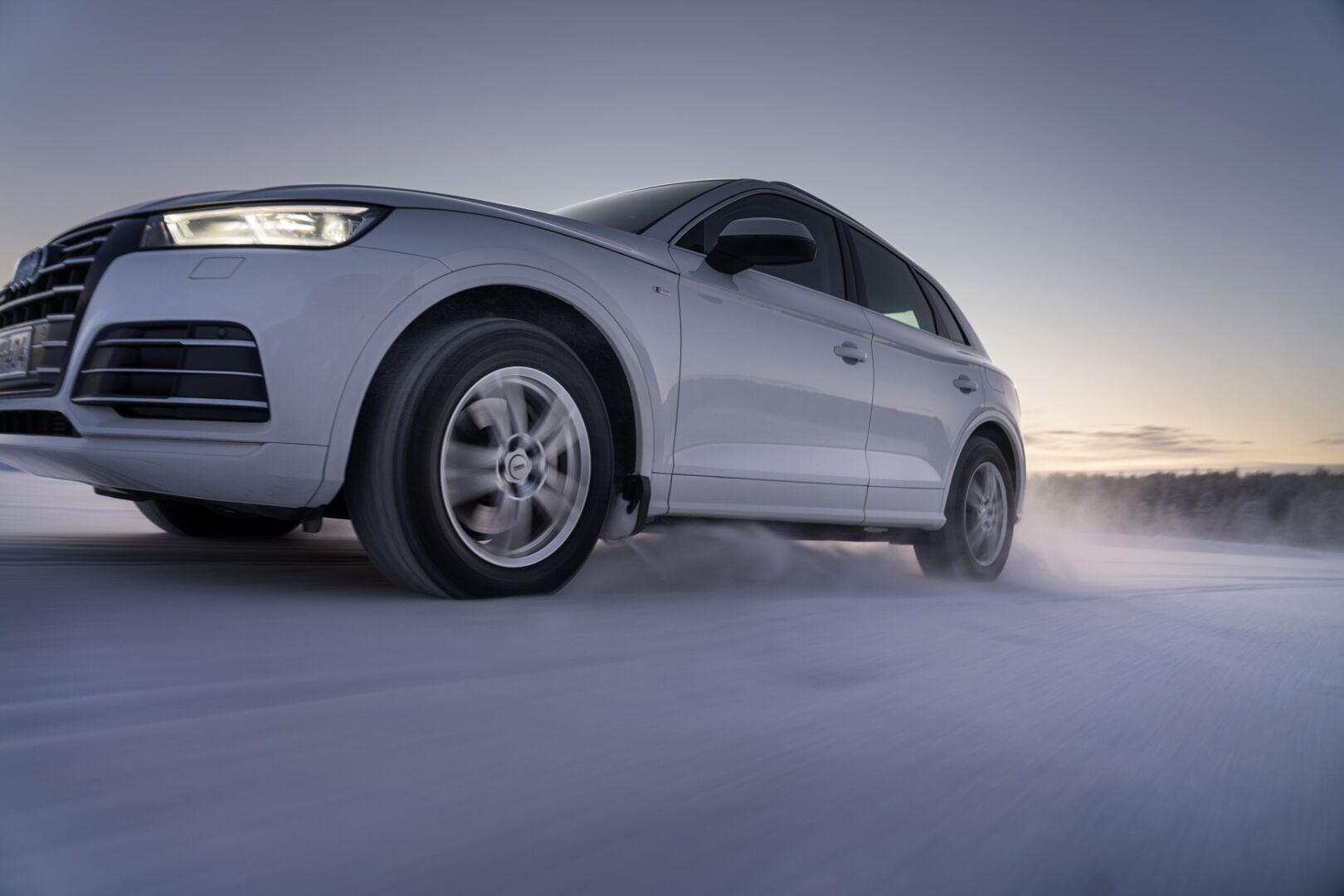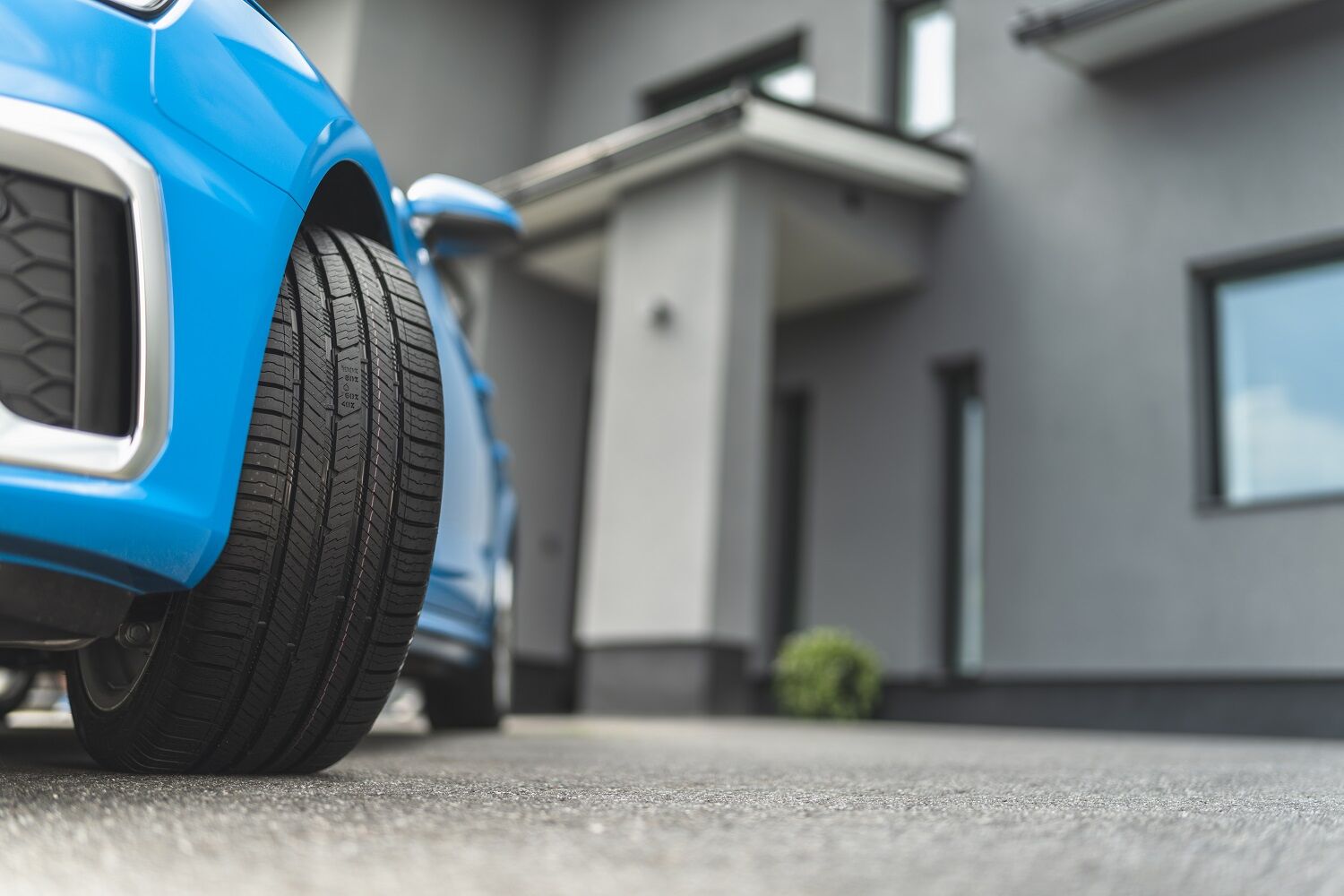
Tires play a big role in preventing aquaplaning. Drive carefully and check your tires to enhance safety on wet roads.
The risk of aquaplaning grows notably when it rains, and water accumulates on the grooves in the road. Read more about how to avoid aquaplaning and what to do if you find yourself in a tricky situation.
What causes aquaplaning
Aquaplaning, also known as aquaplaning, is primarily caused by poor road conditions and standing water. As the road surface wears out, the grooves or ruts created by car tires get deeper and more pronounced. More water gets collected in the grooves as they get deeper over time, so avoid driving directly on them when there is water on the road. Yet, just a thin layer of water on the road is enough to put you at risk of aquaplaning.
Aquaplaning occurs when a thin film of water separates the vehicle’s tire from the road. As a result, traction between the tires and the road surface decreases, and the driver is more likely to lose control of the vehicle.
In addition to poor road conditions, speed plays a large role in aquaplaning. The role of tires is to channel water so that they are sufficiently in contact with the road. As driving speed increases, the tires cannot channel water, and it starts to form a thin layer between the treads and the road.
How to react when aquaplaning occurs
You can do many things to avoid aquaplaning in the first place. Most importantly, avoid standing water and drive mindfully on wet pavement. You should also turn off cruise control when driving on wet roads to prevent aquaplaning in the first place. If, despite your best efforts, your tires lose contact with the road, follow this advice:
- Stay calm. Keeping a cool head when you lose control of your vehicle might be easier said than done. Abrupt reaction should be avoided in this situation, such as sharp braking or making sudden corrective movements, which can worsen the situation.
- Move your foot from the gas pedal. Slowing down without forceful braking requires taking your foot from the accelerator. Braking all of a sudden can cause your wheels to lock. Instead, apply the brakes gently to regain control of the vehicle. If your vehicle is equipped with anti-lock brakes, those can help you to regain control.
- Avoid sudden movements and braking. Another potential mistake is to overcorrect by steering erratically. Instead, keep a gentle grip on the steering wheel. Keep the steering wheel straight and wait for your tires to regain traction and the vehicle to slow down.
- Regain control and carry on carefully. Experiencing aquaplaning can be disconcerting, so pull over in a safe spot to calm down if needed. If the poor weather conditions persist, continue your journey at lower speeds and avoid puddles and standing water on the road. Also, remember to keep a good distance from the vehicle in front of you.
How the right tires can prevent aquaplaning
In addition to calm and careful driving, tires have a significant role in preventing aquaplaning. Here’s how your tires influence the risk of aquaplaning:
Tread depth
More tire tread means more traction and control on the road. As the tires wear out, they are no longer effective at channeling water that gets accumulated on the road. You can prevent uneven tire wear by rotating your tires regularly.
Check the tread depth of your tires by placing a two-euro coin in the tread. The silver outer edge of the coin is 4 mm wide. If this silver edge is hidden when placed in the main groove at least 3 mm of tread is still left, and the tires are not too worn to drive with. However, we recommend getting new tires once your old ones have only 3 mm of tread left. Tires with a tread depth of 3 mm or less are already quite worn and already impact steering properties, for example, when driving in the rain or braking suddenly. On the tread pattern of all Nokian Tyres products, there are a DSI indicator. DSI (Driving Safety Indicator) is a weardown indicator that indicates the remaining tread depth in millimeters. It helps you to know when you should change your tire to a new one. It also helps with increasing the mileage of your tires when you are able to even out the car specific differences in tread wear by rotating the tires accordingly.
The table below shows nicely how tread depth, together with driving speed, has a crucial role in preventing aquaplaning.

Tire pressure
Under or overinflated tires put you at higher risk of aquaplaning. Wrong tire pressure also causes more tire wear, increasing the risk of aquaplaning even further.
Type of tire
Reduced risk of aquaplaning is only one benefit of choosing the right type of tires for the season. Rather than provide better traction on a wet road, using winter tires in the summer can in fact make you more prone to aquaplaning compared to using premium summer tires. Meanwhile, summer tires are no match for high-quality winter tires in cold and snowy conditions.
Tire quality
Tire manufacturers design their tires with safety in mind. Premium summer tires help you avoid aquaplaning by channeling water on the road and preventing it from forming a layer between the road and the tire’s contact area. Visit your local Nokian Tyres dealer to find safe and comfortable tires for your vehicle.

Please remember that it is the driver’s responsibility to ensure their tires are safe and suitable for their vehicle and to follow the vehicle’s manufacturer´s guidelines for proper use and maintenance. Consult your closest Nokian Tyres dealer or your vehicle’s manufacturer for specific advice.


